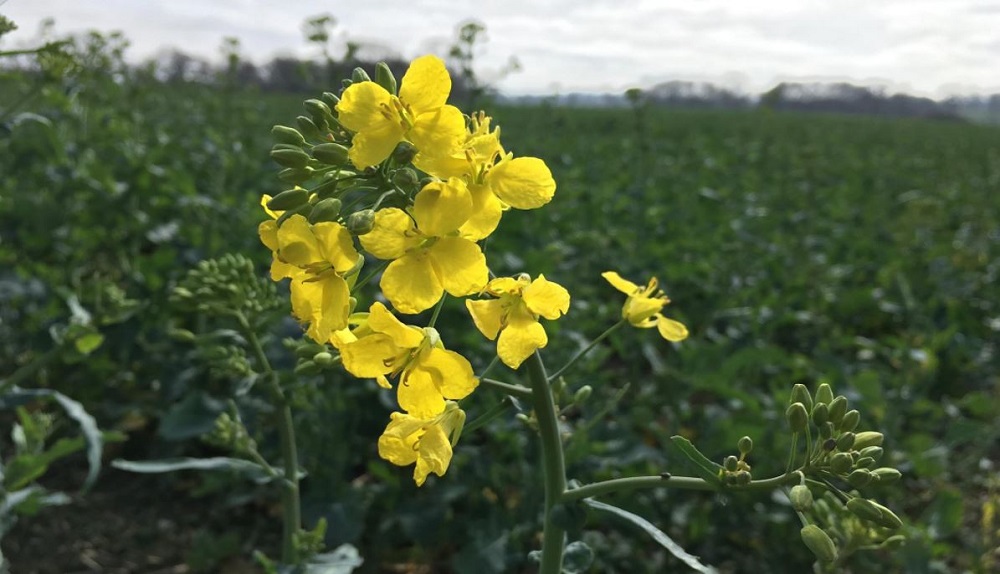- Home
- Knowledge library
- Stem elongation and flowering in oilseed rape (GS3–GS6)
Stem elongation and flowering in oilseed rape (GS3–GS6)
As temperatures warm in the spring, leaf development begins to end and a period of rapid growth begins. Crop development during these stages influences many management decisions, including nutrient and pesticide applications.
Oilseed rape growth guide home
Canopy management in oilseed rape
Stem elongation/extension in oilseed rape (GS3)
A node is the area where a leaf attaches to the stem. An internode is the gap between nodes. At the beginning of stem elongation, the crop has no internodes and is, therefore, short. This ‘rosette’ stage is GS30. As internode gaps increase, the crop gets taller. Once fully extended, oilseed rape stands at about 100–160 cm.
Note: GS4 does not apply to oilseed rape
Flower-bud emergence in oilseed rape (GS5)
During stem elongation, inflorescence/flower-bud emergence occurs. At the ‘green bud’ stage (GS51), flower buds become visible from above the crop. At the yellow bud stage (GS59), the first petals become visible within the closed bud.
Flowering in oilseed rape (GS6)
Flowers are borne on racemes (simple inflorescences that form on branch-like structures) from GS60. Flowers comprise four yellow petals in a cross form, alternating with four sepals. Flowers always open first at the lowest bud.
At GS65, the crop is in full flower. This is when 50% of the flowers on the main raceme are open. At this stage, older petals start to shed (petal fall).
The crop is open-pollinated. A wide variety of insect species, including bees, hoverflies and pollen beetles, contribute to pollination.
Note: Although these stages begin in chronological order, the phases often overlap. In fact, in the middle of spring, an oilseed rape crop may have open flowers, be developing flower buds and still be going through stem extension.


.PNG)

 Jon Oakley thumb.jpg?v=637780279010000000)

